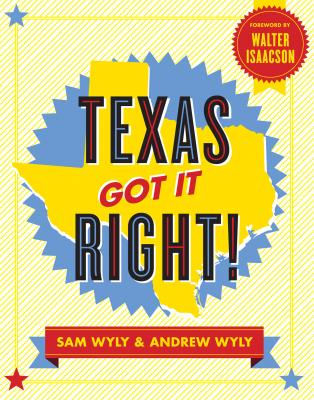ТОП просматриваемых книг сайта:
Texas Got It Right!. Sam Wyly
Читать онлайн.Название Texas Got It Right!
Год выпуска 0
isbn 9781595910769
Автор произведения Sam Wyly
Жанр Экономика
Издательство Ingram
true Texan by choice, but one who hails from
California, which is a state that serves as a counter-
example to the Texas model.
Sam has grown six different companies to
billion-dollar valuations, so he realizes that the key
to the Texas success story is providing fertile ground
for entrepreneurs. We all know that Texas has been
an energy pioneer ever since 1937, when the
companies that became Chevron and ExxonMobil
began drilling offshore. Today that tradition contin-
ues with Texas as a pioneer of the shale-oil boom
and of wind farming. But Texas was also a birth-
place of the microchip. And that tech tradition
continues to flower now that Austin has become the
hot place for start-ups that connect creative think-
ing with technology.
In our times, the word trailblazer has become
such a cliché that we pay little heed to what it
means. Texans, however, have bred into their per-
sonalities the legacy of the true trailblazers:
those cow herders of the Texas plains who blazed
new trails and roads in order to get their livestock
to markets.
This business and entrepreneurial mind-set also
led to a tradition of political leaders who were not just
professional partisans but who instead knew how to be
dealmakers, in the tradition of Bob Strauss. In Califor-
nia, 80 percent of state legislators consider that role
their full-time occupation. For folks in the Texas legis-
lature, that figure is less than 2 percent. They tend,
instead, to be farmers, fire-fighters, car dealers, oil-
field workers, and business owners. In addition, Texas
politicians come in all stripes: progressives, populists,
libertarians, right-wing firebrands, and occasional rev-
olutionaries. The one thing most of them have in
common is that they are colorful.
The Wylys also celebrate—rather than stoke fears
about—the great migrations that have made Texas a
“majority-minority” state, one in which Hispanics,
blacks, and Asians make up a majority of the popula-
tion. In praising the largely Hispanic border area, the
Wylys write that it “is the most richly Texan of places,
because the people who live there know that opportu-
nity resides in what unites us and not what divides us.”
Even if you think that not everything about Texas
is perfect, and even if you love your own home state
more, this book is valuable. Colorful and fun, it is
bursting with little facts and big ideas. It all adds up
to an important celebration of the spicy mix of ingre-
dients—and the exuberance—that has made Texas
successful over the years. The state’s can-do spirit and
love of independent thinkers, innovators, and entre-
preneurs is something that could help kick up our
whole economy.
TEXAS GOT IT RIGHT!
9
I went to college at Denison University, a
small liberal-arts institution in Ohio with
only a few thousand students. One year
I invited my schoolmate, a guy from
Newark, Ohio, to come with me on a
visit to Dallas to see my dad. Driving
from the airport, I noticed that my
friend kept looking out the car window
with a perplexed look on his face.
“Where is the desert?” he asked.
“What desert?” I replied.
Like many people visiting Texas for the first time,
my friend assumed that the state looked like some-
thing out of an old Western movie, a place where men
wore ten-gallon hats and boots with spurs, and the
landscape was all tumbleweeds and oil wells. But here
we were in a teeming, modern city filled with people
of every age and race, and bustling with commercial
and cultural activity. Given all the mythology sur-
rounding Texas, I guess it’s not surprising that
outsiders might still harbor some old-fashioned notion
about the place and its inhabitants, but the disconnect
between fantasy and reality never ceases to amaze me.
I’ve got an interesting perspective on the Lone
Star State. Growing up, I split my time between Cali-
fornia and Texas. Shortly after graduating from
college in 2004, I decided to leave Los Angeles and
move to Dallas. It was a career decision as much as a
personal one: Sure, California had a great climate
and nice beaches, but the business environment,
even in those prerecession years, felt stagnant, bur-
dened with some of the heaviest taxes in the nation
and some of the most restrictive regulations. Texas,
by contrast, felt vibrant, alive with opportunity.
I also couldn’t believe how much cheaper
it was to live in Texas. Actually, it was
cheaper to do almost anything here,
including starting a business, which is
what I did in 2007, establishing a film-
production company in Dallas in
order to pursue my dream of making
movies. The fact that I started a career
as a film producer after leaving Los
Angeles says a lot about how much more
attractive Texas is than California for young
entrepreneurs.
I found that out the hard way when it came time
for me to start making my first

